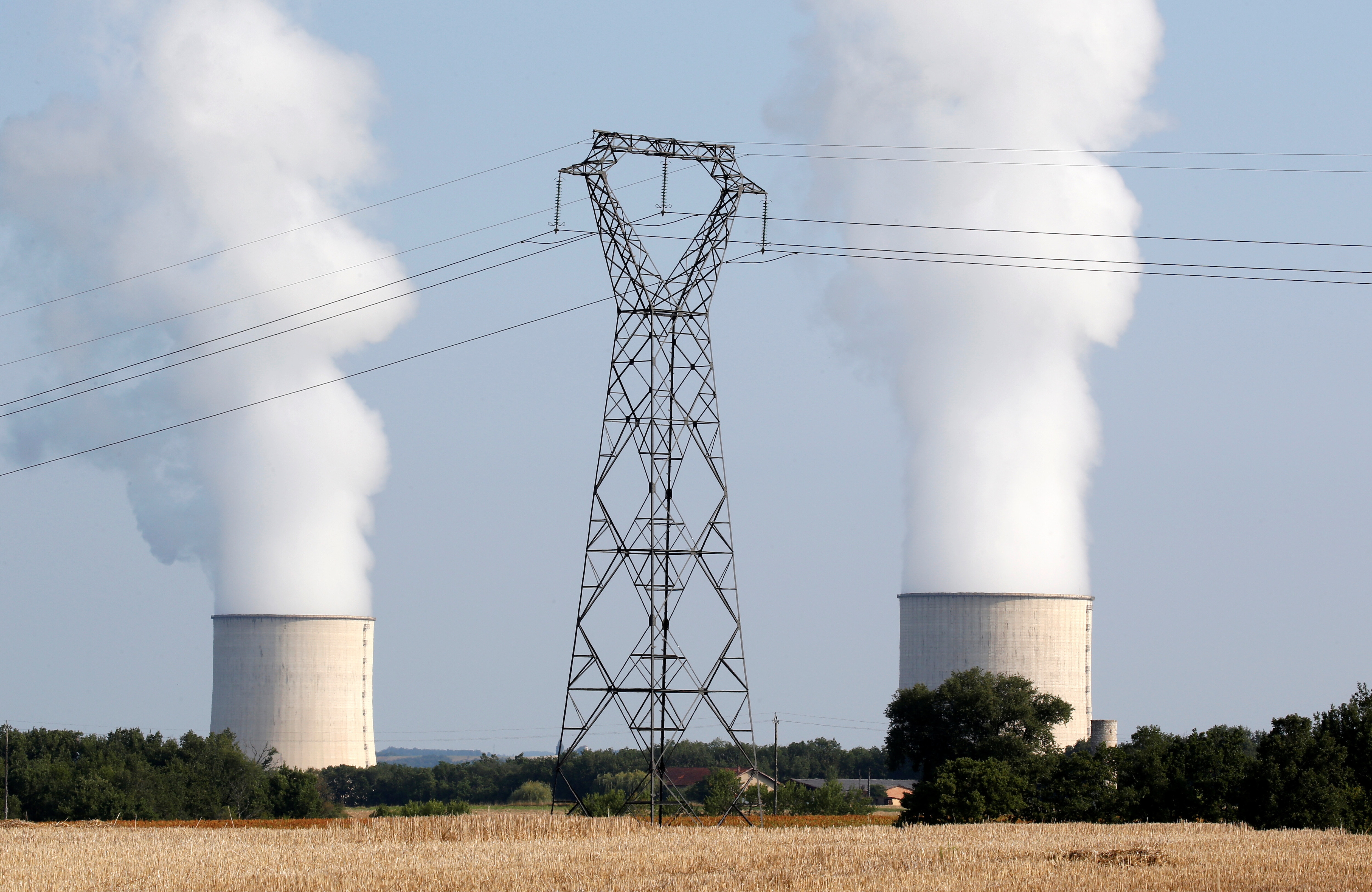Earth Day: What is it, when is it and why is it important?

Earth Day 2025 is calling for the world to get behind the goal of tripling clean electricity generation by 2030. Image: REUTERS/Jo Yong-Hak
Listen to the article
This article has been updated.
- Earth Day takes place every year on 22 April and is one of the biggest environmental protest movements on the planet.
- The theme of Earth Day this year is 'Our Power, Our Planet' – calling for people across the globe to unite behind renewable energy, and to triple the global generation of clean electricity by 2030.
- The World Economic Forum's Global Risks Report 2025 finds that environmental risks make up half of the top 10 risks over the next 10 years.
“Good evening, a unique day in American history is ending. A day set aside for a nationwide outpouring of mankind seeking its own survival.”
Those were the words of US TV presenter Walter Cronkite as he described the aftermath of the first Earth Day back in 1970.
Here’s what you need to know about Earth Day in 2025.
What is Earth Day and what is the theme in 2025?
Earth Day is an international day devoted to our planet. It draws attention to the environment and promotes conservation and sustainability.
Each year on 22 April, around 1 billion people around the world take action to raise awareness of the climate crisis and bring about behavioural change to protect the environment.
Participation in Earth Day can take many forms, including small home or classroom projects like planting a herb garden or picking up litter. People also volunteer to plant trees, join other ecological initiatives or take part in street protests about climate change and environmental degradation.
Official Earth Day campaigns and projects aim to increase environmental literacy and bring together like-minded people or groups to address issues such as deforestation, biodiversity loss and other challenges.
The global theme for this year's Earth Day is 'Our Power, Our Planet' – calling for people across the globe to unite behind renewable energy, and to triple the global generation of clean electricity by 2030.
Achieving this goal is seen by experts as crucial to limiting the rise in global temperatures to 1.5°C.
How did Earth Day begin?
Millions of people took to the streets of US cities and towns on 22 April 1970 in mass protests over the damage being done to the planet and its resources.
Amid the demonstrations, protesters brought New York City’s usually bustling Fifth Avenue to a halt, while students in Boston held a “die-in” at Logan Airport.
The environmental impact of the post-war consumer boom was beginning to be felt at that time. Oil spills, factory pollution and other ecological threats were on the rise, with little if any legislation in place to prevent them.
The protests brought together people from all walks of American life – accounting for about 10% of the US population – to demonstrate and voice their demands for sustainable change. The Earth Day website calls it the birth of the modern environmental movement.
What led to the street protests in 1970?
Concerned about increasing levels of unchecked environmental destruction, Junior Senator Gaylord Nelson of Wisconsin suggested a series of “teach-ins” on university campuses across the US in 1969 to raise awareness of environmental threats.
Nelson was joined by Congressman Pete McCloskey and activist Denis Hayes to organize the teach-ins, but the group soon recognized an opportunity to broaden the event’s appeal beyond student populations.
The newly named Earth Day protest events attracted national media attention and support from around 20 million Americans across age and political spectrums, occupations and income groups.
What did the protests achieve?
The Earth Day demonstrations left an indelible mark on US policy. By the end of 1970, the US Environmental Protection Agency came into being and a stream of laws followed to help protect the environment. These included the National Environmental Education Act, the Occupational Safety and Health Act and the Clean Air Act.
Further legislation was soon introduced to protect water quality and endangered species, and to control the use of harmful chemicals and pesticides.
When did Earth Day go global?
Earth Day went beyond the US in 1990. Around 200 million people from 141 countries joined efforts to boost recycling around the world that year, paving the way for the 1992 United Nations Conference on Environment and Development in Rio de Janeiro, Brazil.
What’s the World Economic Forum doing about climate change?
This “Earth Summit”, as it became known, led to the formation of the UN Convention on Climate Change and the UN Convention on Biological Diversity, along with the Commission on Sustainable Development to monitor and report on the implementation of Earth Summit agreements.
And as citizens were increasingly concerned with corporate impacts on the natural environment, big and small businesses started to feel the pressure to consider sustainability in their practice.
Why is Earth Day important today?
As the millennium loomed, the Earth Day movement turned its attention to the growing reality of the impending climate crisis with a clear message for world leaders and business: urgent action is needed to address global warming.
It’s a message that is even more relevant today. Analysis from the Intergovernmental Panel on Climate Change states that without further immediate action to curb greenhouse gas emissions, the world is on course for temperatures 3.2°C above pre-industrial levels by 2100. This level of warming would be catastrophic for the planet and all life on it, including humans.
The past 10 years, 2015-2024, were the 10 warmest years on record, according to the World Meteorological Organization. Last year was likely to have been the first calendar year with a global mean temperature of more than 1.5°C above the pre-industrial level – at about 1.55°C above the 1850-1900 average.
The World Economic Forum's Global Risks Report 2025 finds that environmental risks make up half of the top 10 risks over the next 10 years, with extreme weather events, biodiversity loss and ecosystem collapse and critical change to Earth's systems being the top three.

Nature is our biggest ally in fighting the climate crisis and has slowed global warming by absorbing 54% of human-related carbon dioxide emissions over the past 10 years. Yet, we are losing animals, marine species, plants, and insects at an unprecedented rate, not seen in 10 million years. Threats from human activity for food production and ocean use, infrastructure, energy and mining endanger around 80% of all threatened or near-threatened species.
Earth Day has become a leading light in the fight to combat climate change and nature loss. As we celebrate its 55th anniversary, we must make use of this truly global movement to act, as citizens and governments, as consumers and businesses, and as individuals and communities. Our survival could well depend on it.
Don't miss any update on this topic
Create a free account and access your personalized content collection with our latest publications and analyses.
License and Republishing
World Economic Forum articles may be republished in accordance with the Creative Commons Attribution-NonCommercial-NoDerivatives 4.0 International Public License, and in accordance with our Terms of Use.
The views expressed in this article are those of the author alone and not the World Economic Forum.
Stay up to date:
Climate Indicators
Related topics:
Forum Stories newsletter
Bringing you weekly curated insights and analysis on the global issues that matter.
More on Climate Action and Waste Reduction See all
Christophe Beck
December 29, 2025







